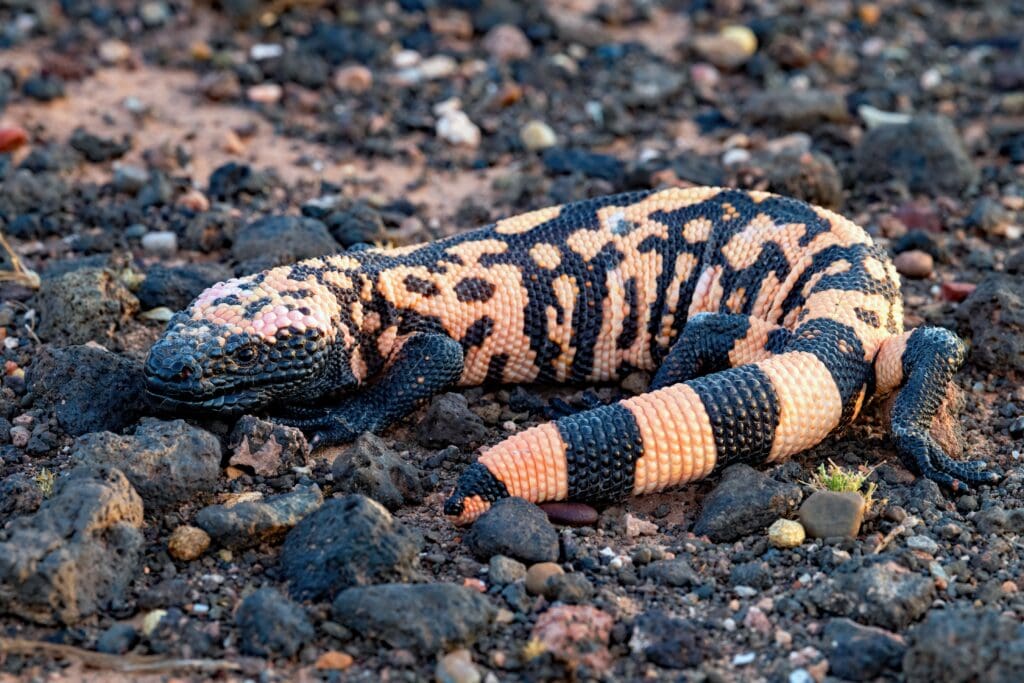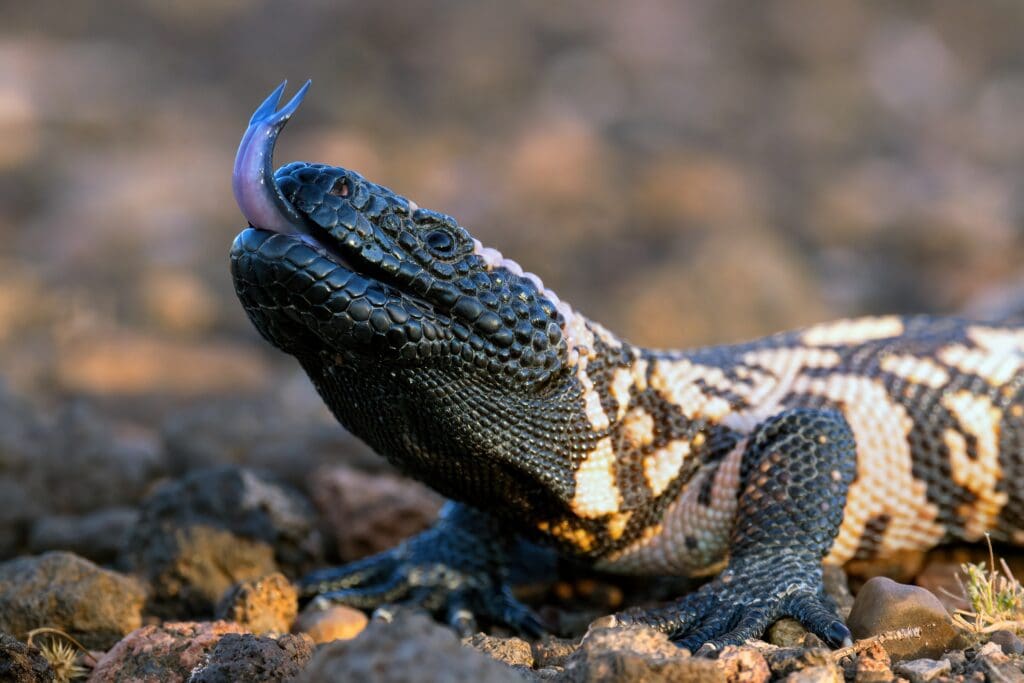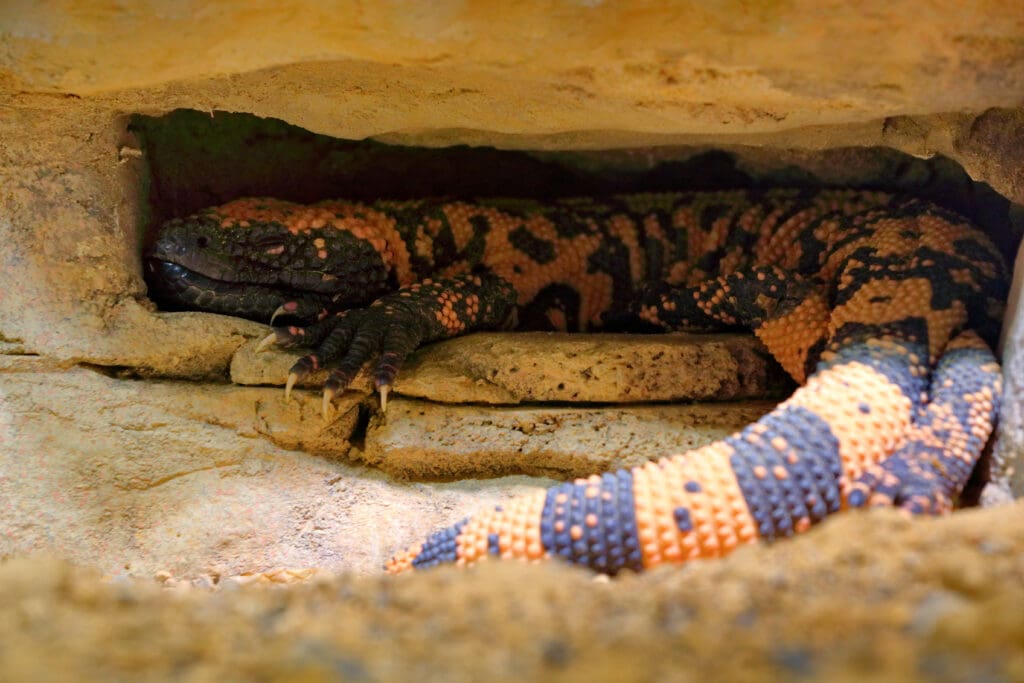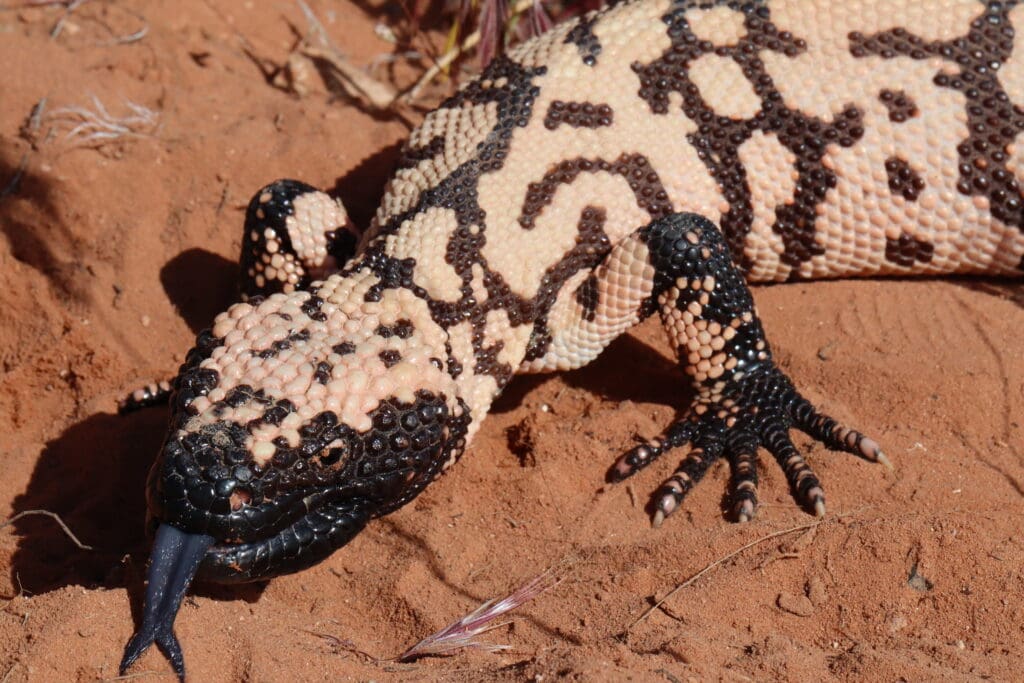Gila Monsters: Beneath the Scales of Utah’s State Reptile
By Tyson Victor
Fall is an excellent time to search for one of Utah’s most iconic creatures, the Gila monster. This large lizard spends most of the summer underground to escape the blistering heat, then emerges in the autumn seeking sustenance before winter brumation (akin to hibernation). Washington County, located within the Mojave Desert, is a hotspot for Gila monster sightings. If you’re keen to know more about this incredible reptile and how to safely interact with them, read on.

Gila Highlights
- Exclusive Habitat: The Mojave Desert in Washington County is the only place in Utah where you might glimpse a Gila monster.
- Majestic Yet Elusive: This venomous lizard, the largest of its kind in the United States, spends around 90-95% of its life underground. When they do emerge, it’s typically to feed or breed.
- Unique Diet: They might eat only three or four times a year, but when they do, it’s a feast! Gila monsters specialize in raiding nests for eggs and young animals, consuming up to a third of their body weight in one sitting.
- Desert Survivalists: Gila monsters have evolved to thrive in harsh desert environments, storing water in their bladders and accumulating fat in their tails.
Medical Marvel
Did you know Gila monsters help save lives? Their saliva contains a hormone that boosts insulin production. This discovery led to the development of Byetta, a medication that assists individuals with Type 2 diabetes.

Gila Monster Encounters
Gila monsters are secretive and sightings are quite rare, so count yourself lucky if you see one of these striking reptiles in the wild. While Gila monsters are not aggressive, they will defend themselves if necessary, so maintain a respectful distance. Remember that handling or harassing a Gila monster is not only dangerous due to its venom, it is also illegal.
If you’re fortunate enough to spot one:
- Capture the Moment: Snap high-quality photos from multiple angles. Just like our fingerprints, each Gila monster possesses a distinct pattern, aiding in individual identification.
- Location Recording: Note down the exact location of your observation.
- Contribute to Science: Share your photographs, location details, and other relevant information (including date, time, weather, and animal behavior) to the Utah Division of Wildlife Resources (UDWR) reptile biologist, Ann McLuckie, at annmcluckie@utah.gov.

Unlikely Scenario: Gila Monster Bites
Although Gila monster bites are exceedingly rare, and fatalities are unheard of, it’s crucial to know how to respond. These reptiles defend themselves when provoked, so always maintain a safe distance. In the event of a bite:
- Removing the Lizard: If a Gila monster latches on, place it on the ground and gently detach it using an object like a stick.
- First Aid: Do not cut the wound, attempt to extract the venom, or apply a tourniquet.
- Medical Intervention: Immediately seek medical attention. Although the bite is agonizing, no anti-venom exists.
Remember, thoughtfulness and respect toward nature usually result in the same being returned. Enjoy Utah’s pleasant fall temperatures, and who knows? You just might spot a Gila monster this season!

More Information
- Check out this UDWR Wild podcast episode about Gila monsters.
- Download this brochure about Gila monsters.